SEO is an abbreviation that probably everyone who ever had to deal with websites, digital marketing, and website development knows. If you are one of the (lucky) few that has never heard of this, it stands for Search Engine Optimization.
Google, as an example of a search engine, relies on so-called Google trust signals that it receives about a website. It uses these signals to evaluate your website as well as the content on it and then ranks your website based on the score you get.
This guide is designed to lead you through SEO best practices and introduce you to a checklist that you should follow to ensure you are maintaining your ranking. And since this field is constantly changing it is crucial you know and follow at least the basics alongside getting some SEO training.
Foundations of SEO

The foundations of a good SEO strategy begin with crawl accessibility (this means search engines can reach and index your website). Next up is creating compelling content that provides value, is relevant, and answers search queries. And you also need to make sure your site and content are keyword-optimized and that your site is fast to load, easy to use, and offers a great user experience on any device.
Then we have earning links and citations to our content from other websites, as well as having titles and URL descriptions that draw clicks.
And lastly, there is the snippet markup.
In short, there is a lot to think about and many little pieces that need to be added to ensure you have the best website. So, what can you do?
There are a lot of different SEO guides and e-books that tell you what you should do, how to create relevant content, rank high in search engines, etc. However, these can be quite difficult to use. Basically, they can end up taking more time to go through than actually optimizing your site for SEO.
Since checklists are easier to manage, we recommend you use that instead. And now we will introduce you to one of the best on the market!
If you’re new to SEO or feeling overwhelmed, it’s helpful to learn from experts who simplify the complex. For instance, SEO specialist Ralf van Veen often emphasizes starting with strong technical foundations and a user-focused content strategy. You can read More about Ralf to explore how experienced professionals approach sustainable SEO growth.
The SEO Checklist by SEO Buddy
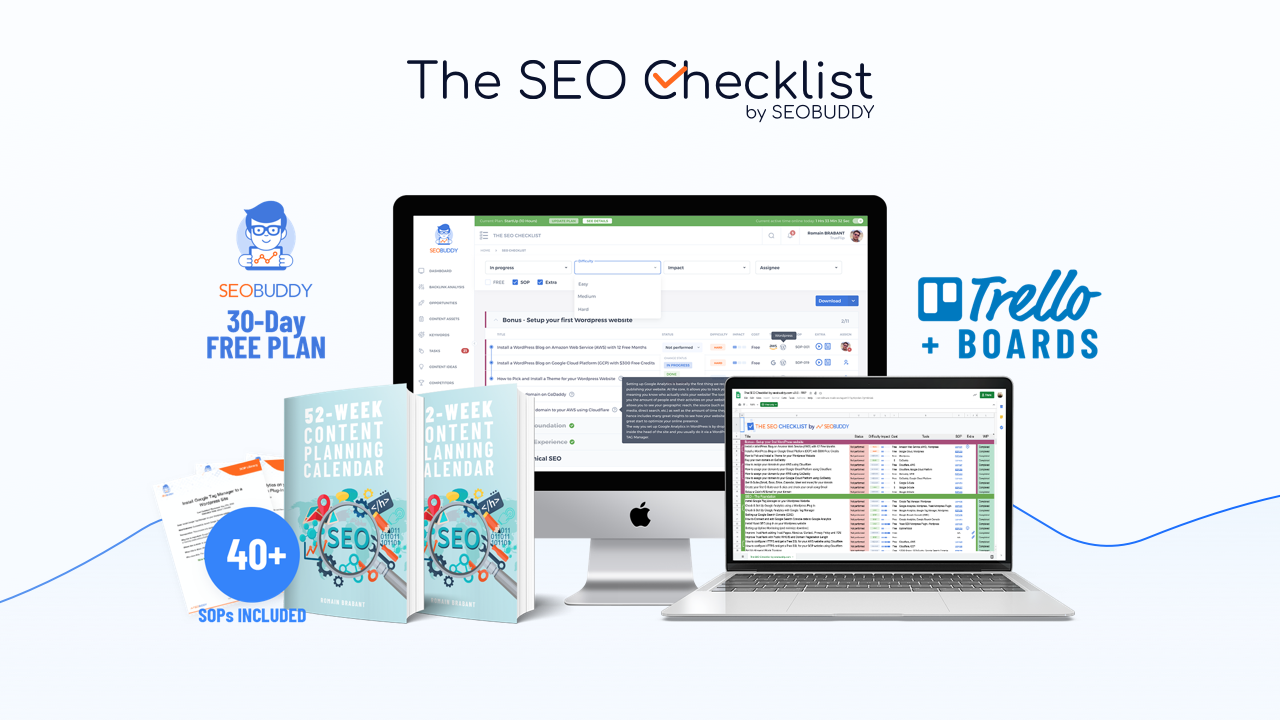
This checklist can also serve as a step-by-step guide on which actions to take to improve your SEO ranking (and eventually climb to the 1st spot on Google search results). Moreover, if you don’t like the checklist or need some extra help, you can access extra training tutorials and videos on YouTube or Blog Posts.
The format of the SEO Checklist is optimized for you. It is not a large blog post that you have to go through whenever you need to work on your SEO nor is it a 150-page e-book you will probably never read. Instead, it was created to give you a laser-focused vision of what you need to do.
It is also quite practical so you can have it open and quickly find what you need to work on when improving your SEO. And it even comes in the form of a web app.
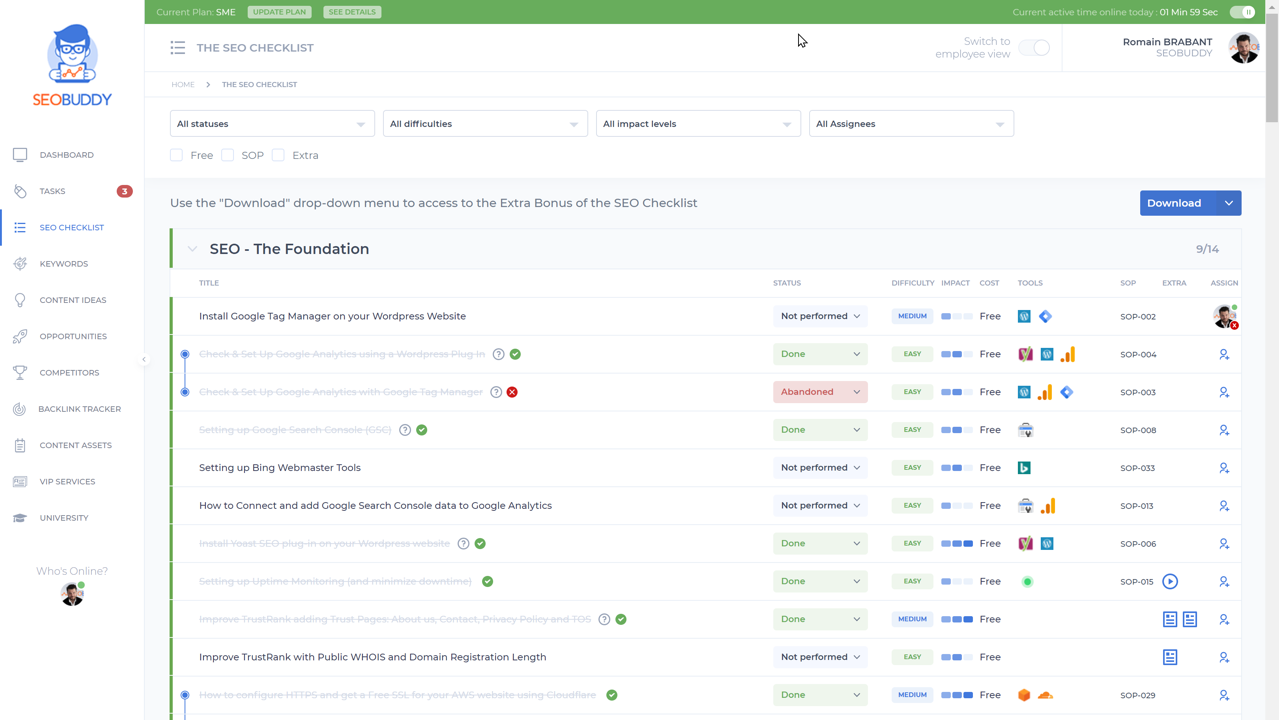
We know that improving your SEO ranking is tough. Maybe you’ve tried it several times and failed, and now feel as if it is better to give up or leave it to someone else. But we would advise you to keep trying. Maybe you just haven’t found the right SEO checklist that will show you what needs to be done and how.
Also, in case you think SEO is no longer needed, you are wrong. Search engines and internet browsing are not going away any time soon.
If you think you are just a beginner and thus too inexperienced to try this, don’t worry! The SEO Checklist can help you see the bigger picture of what needs to be done to optimize your site.
You will also be able to track what you have and haven’t done so you don’t miss out on any important elements of SEO.
Checklist Overview
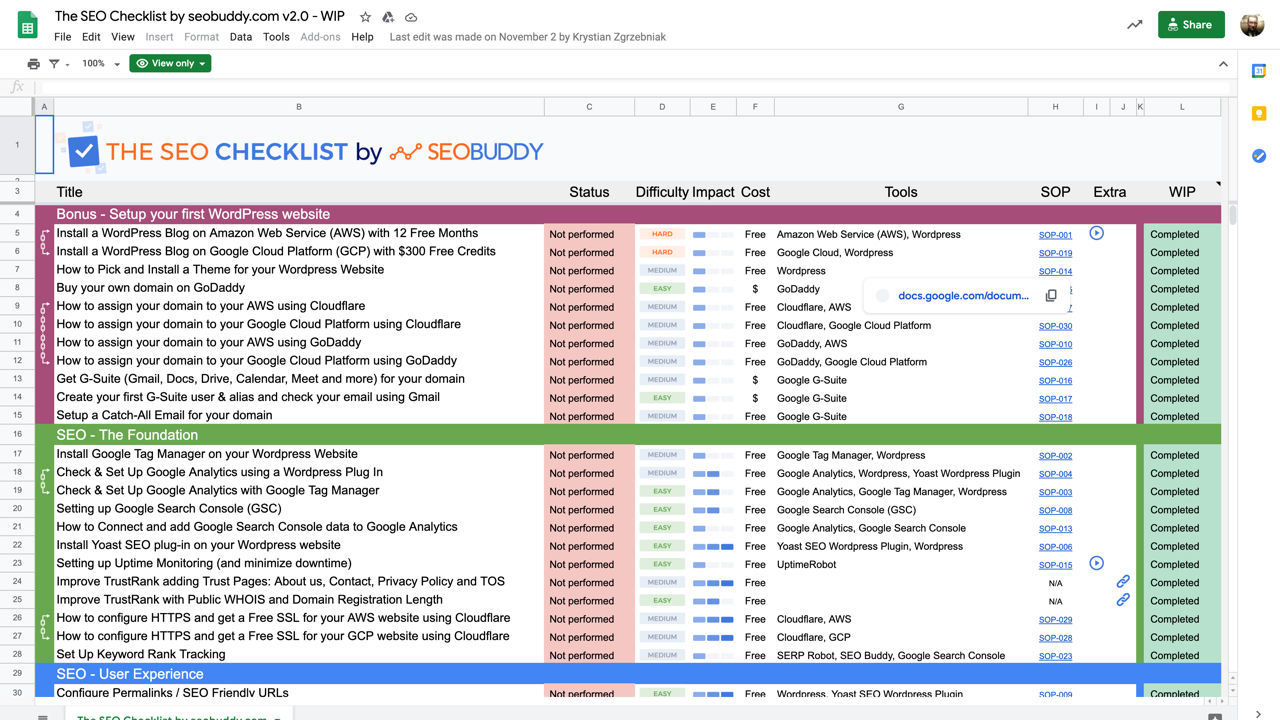
Once you download the checklist, you will receive a Google sheet with different steps for you to follow. These steps have been organized into different categories.
The checklist starts with the Foundation category. This includes steps like installing Google Tag Manager and setting up Google Analytics and Google Search Console. Next, you can set up Bing Webmaster Tools and install the Yoast SEO plugin. You can then improve your TrustRank by adding trust pages (About Us, Contact, and Privacy Policy) and with Public WHOIS as well as Domain Registration Length.
The last few steps of the Foundation category include configuring HTTPS and getting free SSL for your AWS or GCP website using Cloudflare. You can also set up keywords rank tracking and backlinks monitoring.
While completing these steps, you can update the status of each one (simply mark it as “done” or “not performed”).
There is a difficulty level (easy, medium, and hard) so you know what you can expect from each step. You can also see the level of impact a specific step can have on your SEO ranking (low, medium, high), as well as the cost associated with completing the step (this basically tells you if the tool you need to use is free or premium).
You will see a list of tools that need to be installed. So do some research beforehand to get more familiar with what each tool does.
The final column contains a link that takes you to an SOP document. There, you can read more info about each step, such as what is the goal you are trying to achieve with this step, what the ideal outcome would be, why is it important, where it is done, when, and by whom.
You’ll also have tutorials that take you through the setup of each tool and give you an estimated time it will take you to complete a specific step so you can efficiently plan your timeline.
The second category is User Experience. Here you will be configuring permalinks and SEO-friendly URLs, and checking if your website is mobile-friendly (this is extremely important as more and more users are doing everything on their phones).
Next, you will check your website loading time (this needs to be as fast as possible otherwise you risk losing a big number of your clients) and see if you have a 404 page that needs optimization.
Then you should ensure that your content can be shared easily on social media, and establish your branding so people know this is your authentic and official site.
Lastly, you will record user sessions and heat maps so you can better understand the user’s experience.
Most of the steps in this category are easy, except checking your loading time, so maybe take a bit to familiarize yourself with the process. Also, most of the steps are free, except setting up heatmaps, which can be done on Hotjar or Crazy Egg.
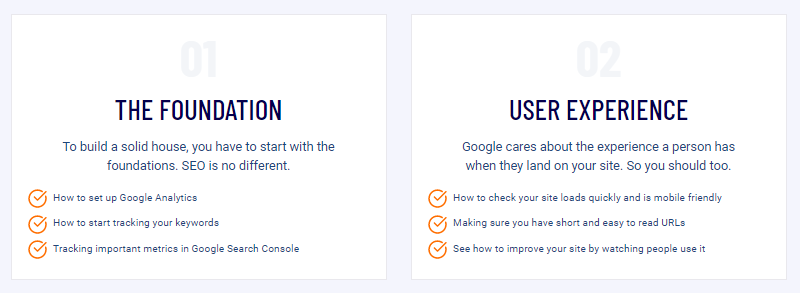
The third category is Performance. Here you will be checking if your server is located close to your service area, and if you are using a CDN as well as gzip compression. You will also check for HTTP/2 and use a caching solution for your site.
You will then minify your JS and CSS files and resize images at upload by compressing and optimizing them. This makes sure everything loads properly and that your users have a good user experience while on your site.
Lastly, you want to optimize your database and ensure you always have up-to-date technology.
Most of the steps in this category are of easy or medium difficulty, except for the process of minifying JS and CSS files. However, there is an SOP document for this step so you can familiarize yourself with the process and the expected outcomes before tackling it. And again, most of the steps are free, except for using a top-performing web host, which naturally comes at a cost.
The next category is Content. This category deals with your content strategy. For that, you want to make sure you have researched your keywords, are creating long-form content, and that you are finding and fixing any content cannibalization issues or duplicated content.
Then, you will create content hubs and feed them with supporting content. You should also update your content on a regular basis and add it to your categories.
This category is a bit more complex and takes up more time. Also, most of the steps here will cost you a bit, but this is a very important part of your SEO so make sure you do it well.
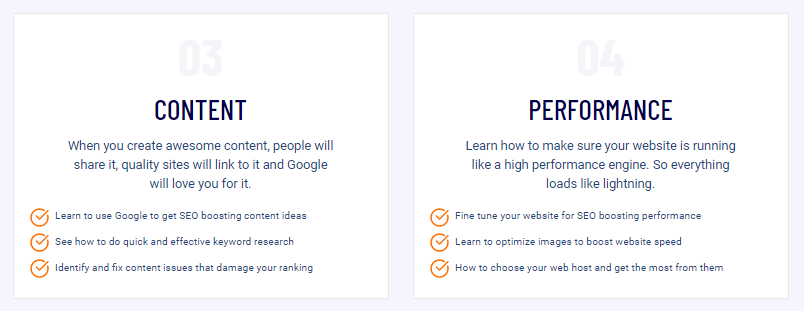
Next is the On-Page SEO category, which includes checking your target keywords, adding them to your URLs, headings, and titles, and creating meta descriptions that are enticing. You should also use sub-headings and format content properly.
On top of that, you should link to any relevant pages, name your images, and write Alt text. This should all be relatively easy to do and all the steps are free.
Similar to this, we have the Off-Page SEO category, which deals with building foundational links and interlinking social networks. This is where you should try to turn brand mentions into links and use social signals to boost your rankings.
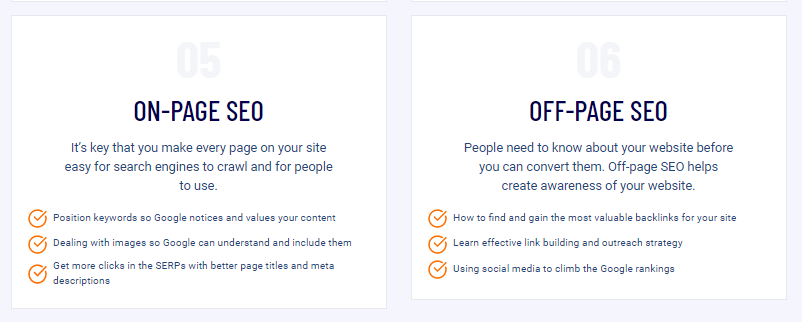
The seventh category is Technical SEO. This includes checking HTTPS and fixing mixed content. You will create an XML sitemap and add it to your Google Search Console either manually or via WordPress. You will check for and fix broken links, redirect chains, and missing meta titles as well as descriptions.
Here, you will also make sure your redirects are working properly, that irrelevant pages are not being indexed, and that there aren’t any index coverage issues. And the good news is that all of the tools for this category are free to use, most of them have an SOP document that shows you more details about the process that needs to be done, and most of them are easy to set up.
The only step that will require more time and patience is creating the XML sitemap manually and adding it to your Google Search Console.
The final category is Local SEO. In the realm of Local SEO, another vital tool to consider is a local citation finder. Here, you will claim your business listings on Google, Yelp, or Bing. You should optimize these listings, reach out to people who left reviews as well as reply to them, and ensure you have consistent NAP – Name, Address, and Phone details across the site and on social networks. All of these steps are free and quite easy to set up.
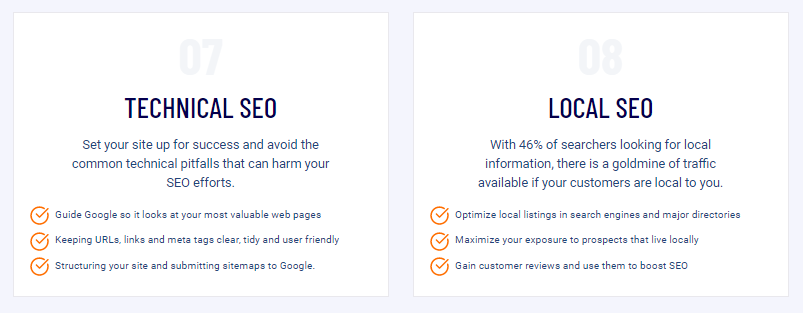
What Does the Checklist Bundle Include?
Besides the 102-point SEO checklist in the form of a Google sheet and web app, you will also get 44 step-by-step process documents (detailed standardized operating procedures) with more than 200 pages, a 50-point content distribution checklist (Google sheet), and a 52-week content strategy (pdf file).
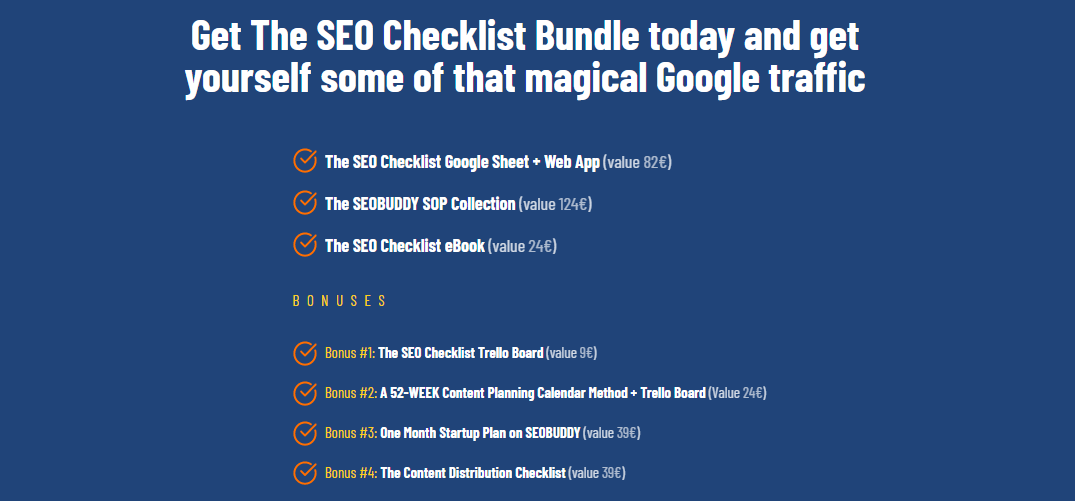
Conclusion
You can download the SEO Checklist (and everything else we mentioned) for just $97! Also, if you use the coupon code “WEBFACTORY” you can get 25% off.
Overall, it seems like a pretty good deal for something that is really valuable for your business.